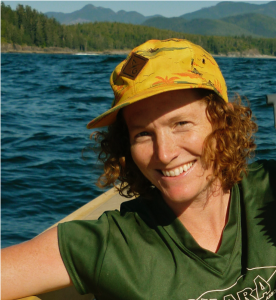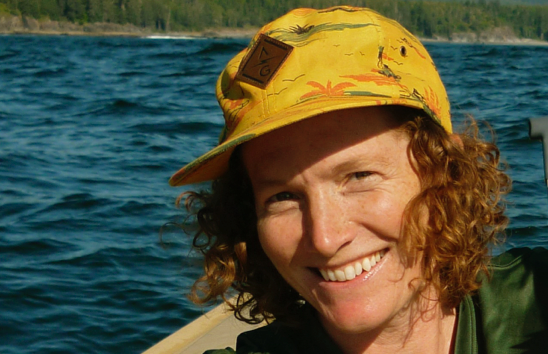Republished from GreenBiz.
It’s almost impossible to upcycle used snowboards. Because their components—metal, wood, plastic, resin—are tightly fused during manufacturing, the best end-of-life outcome is usually chopped scrap that can be downcycled into fill. Which is why Burton is working with a new recyclable epoxy resin. ReRez allows used snowboards to be disassembled, and each material input to be recycled into new life.

This focus on end-of-life innovation is just one of the ways that Burton is meeting its ambitious 2020 sustainability goals. From 100% Fair Labor Association compliance in its factories, to the carbon-neutral Burton US Open, to Chill, its youth development program, the company believes that succeeding as a business means succeding at sustainability.
The Bard MBA’s Cory Skuldt spoke with Ali Kenney, VP of Global Strategy and Insights at Burton, for The Impact Report. Kenney proposed and built Burton’s Global Sustainability Department and currently drives the sustainability strategy and platform for the company’s portfolio of brands.
The following Q&A is an edited excerpt from the Bard MBA’s May 18th The Impact Report podcast. The Impact Report brings together students and faculty in Bard’s MBA in Sustainability program with leaders in business, sustainability and social entrepreneurship.
BARD MBA: COULD YOU GIVE US SOME BACKGROUND ON BURTON?
Burton was started in 1977 by Jake Burton Carpenter at a small barn in Vermont. He wanted to make prototypes for what have become snowboards, so he really was the pioneer of what we now know as snowboarding. It wasn’t just about making the product prototypes—he really had to build the entire sport.
Fast forward, and snowboarding is now a global sport and in the Olympics. We’re still based in Vermont as a privately held company owned by Jake and his wife Donna, who’s our CEO. We’re a global company with offices all over the world. Half of our business is in snowboarding hard goods, and we’re also doing soft goods—fleece, jackets, hats, socks, hoodies—as well as creating experiences.
BARD MBA: WHAT ARE THE FACTORS THAT PLAY A ROLE IN YOUR SUSTAINABILITY STRATEGY?
We’ve always tried to set goals that are meaningful across the company. I didn’t want to create a bloated sustainability bureaucracy, so it’s all about getting the internal experts we already have to continue to be the experts and execute on the goals. Our sustainability team is really set up to guide everyone and set the vision, set the strategy.
We tend to get the credit, but it’s our product teams who’ve done a lot of the work. For example, we have a 100% organic cotton goal by 2020, and 50% of all the polyester we use has to be recycled. They’re the ones doing a lot of that work and finding new sources and factories.
Our sustainability team itself is more focused on newer tasks that didn’t yet live within the company, like social responsibility and fair labor. Now we have a group managing that. We also have a sustainable chemistry expert who’s a chemist. So those are the roles that actually fit within the sustainability department.
All the rest of the stuff, from packaging goals to product to quality, waste reduction and carbon—those are all spread out across the global company. Everyone who’s an expert is executing on those within their own departments.
BARD MBA: WHAT ARE YOUR BIGGEST GENDER EQUITY CHALLENGES RIGHT NOW, AND HOW ARE YOU TACKLING THEM?
Our biggest gender challenge isn’t an internal one at this point. I can’t say that historically as a board sports and sporting goods company, but things have changed dramatically over the last fifteen years here. With Donna at the helm, it’s part of everyday business, and women are respected as equals. We have almost equal levels in leadership, and at different levels there’re more women than men.
I honestly don’t feel that we have an internal issue so much as a larger issue in the sport, the industry, and then all the way up to a societal issue. I think we’re at a really unique moment in time because we’re simultaneously experiencing the #MeToo movement while being led by an administration that isn’t necessarily always showing respect for women.
As a company, we’re realizing that we need to make an impact wherever we can. It’s not only through making sure that our internal women are empowered and that we have women in leadership. It’s also to blow that out even further and make sure that women feel accepted in snowboarding and in the outdoor industry. We’re a company that’s making gear that works better for women. We’re using respectful imagery and encouraging meetups.
The larger issue is that companies really need to take women seriously. People are talking about that a lot now and saying that they’re going to, but it’s still a question of, “Are we going to decorate women or are we actually going to empower them?” I hope we go in the direction of empowerment.
BARD MBA: HAS BURTON SET AND OVERARCHING CIRCULAR ECONOMY GOAL, AND HOW MUCH AS IT INFLUENCED YOUR SUSTAINABILITY INITIATIVES?
We don’t actually use the term “circular economy” too often within the walls of Burton. There are so many things that we can do to fundamentally change how we do business, and I think circular economy is now used in a way that somewhat cheapens it. There’s the way that apparel retailers offer to take back old clothes for recycling, and then you get a discount for new clothes. There’s also all that controversy about where that clothing is going, and whether it’s really just about getting rid of the guilt in the garage.
We’re trying to fundamentally change all the areas that impact our business the most. Doing life cycle assessment and using software to really hone in there allows us to understand where our highest impact is as a manufacturing company across all of our product lines. So, for example, we’re shifting our soft goods to lifetime warranty and doubling our repair amount.
We also have all of our R&D initiatives going on. We’ve worked for probably six years on trying to find a way to recycle snowboards. The issue is that they’re made out of metal, wood, plastic, resin—all sorts of different materials—as they’re currently manufactured. That means that all you can do is chop them up into really small pieces and maybe pull out the metal with magnets and then downcycle the scrap into slop or filler.
We now have a small portion of our board line using a product called ReRez. Resin is the glue that holds a snowboard together. With ReRez, if you put the scrap or the actual snowboard into a safe acidic solution at the end of its life, you can separate out all of the materials and then turn them into other uses and even upcycle them.
That’s the kind of thing we’re thinking about when we think about circular economies.
